Genealogy has changed.
Twenty years ago, when I was just starting in this business, tracing your ancestors was something that was carried out in archives and record offices, and if you had ancestor who lived miles away from where you lived (which is the vast majority of us!) you had to employ someone in that place to access the documents for you. You might have a computer, but it was just used for something to type up your findings and write letters on. As a professional researcher, my work was carried out by spending two or three days a week in my county record office, researching records for people who were unable to travel to Northamptonshire, where I lived.
Then the internet arrived, and over the following years, the nature of genealogical research changed drastically. The International Genealogical Index became available to search online, the BMD indexes became available to search for an ancestors by just typing in a name, and then, slowly, each census record became available to search and view without any need to leave your living room. Over the last few years, more and more historical documents, including some parish registers, wills and other records so useful to the genealogist, have become available to search, view or download.
This means, of course, that many people who had to rely on professional researchers in the past are now able to do it for themselves. With popular programmes such as Who Do You Think You Are? and Heir Hunters, tracing your ancestors or living relatives has become an extremely popular hobby. Websites such as Ancestry and FindMyPast have become some of the most visited sites on the internet.
So what does all this mean for the professional genealogist?
On the one hand, it means that we are losing work. People no longer need to use a researcher to go to the relevant archives to look at census records. It’s possible to build a creditable family tree using online records alone. On the other hand, as experts we have so much to offer to the amateur family historian. Instead of bemoaning the fact that tracing a family tree from scratch is nowadays a rare request, we need to be moving with the times and looking at what we can offer to those people who are doing it for themselves.
Tracing ancestors is full of pitfalls. The amateur family historian soon finds that finding ancestors is not quite as easy as it looks on TV. On the other hand, some fall into the trap of finding published trees on Ancestry that mention their ancestors and think that is the job done. Unfortunately, many, many trees, published or otherwise, are full of inaccuracies and the wrong people. While the internet has made tracing ancestors a lot easier, it has also made it easier to make mistakes.
As professionals, we need to be offering services that support and help the DIY family historian, making sure that they are viewing original records, covering every possibility, using every source that is relevant and available, backing up their information with historical knowledge, helping with reading old documents and guiding them in what to do next when they hit a brick wall.
To that end, I have changed the focus of my own genealogical services, and as well as full British Genealogy research services, I am now offering genealogical support services, including:
- Advice on getting through brick walls
- Will reading
- Photography
- Living relatives searches
- Background research
- Ancestral biographies.
For more details, go to my HOME PAGE and then click on each link to go to a page where each service is explained in full detail.
I am still in the process of editing these, so please be patient, and if you notice any links that are not working please let me know! I would also be very grateful for any comments or suggestions.
Tracing your ancestors is one of the most interesting and satisfying pastimes there is – so let’s make sure that you are getting the most out of your British genealogy searches.

 (Updated 1st April 2015)
(Updated 1st April 2015)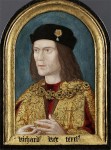
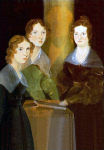
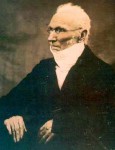

 Many an English village still has a maypole on the village green, harking back to the middle ages when the maypole would have been brought in from the woods amongst great merrymaking. Villages would compete to see who could produce the tallest pole. The pole would remain for a day and then be taken down although in larger towns it became a permanent fixture. The maypole has a very symbolic tradition. Trees were seen as symbols of fertility and strength, and when they were cut down for the maypole, a branch would be stripped of branches, with a few left at the top. It would then be wrapped in violets.
Many an English village still has a maypole on the village green, harking back to the middle ages when the maypole would have been brought in from the woods amongst great merrymaking. Villages would compete to see who could produce the tallest pole. The pole would remain for a day and then be taken down although in larger towns it became a permanent fixture. The maypole has a very symbolic tradition. Trees were seen as symbols of fertility and strength, and when they were cut down for the maypole, a branch would be stripped of branches, with a few left at the top. It would then be wrapped in violets.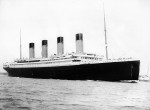
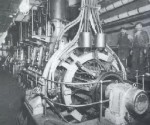

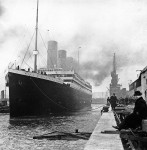
 William Thomas Green Morton was a dentist who gave the first demonstration of the use of ether to remove a lump at Boston, Massachusets in 1846. After this, surgery began to change dramatically. Before this, surgery was a terrifyingly traumatic and painful process, which could only be undertaken as a last resort to try and save a life. Ether also began to be used in dentristry in order to remove teeth without pain.
William Thomas Green Morton was a dentist who gave the first demonstration of the use of ether to remove a lump at Boston, Massachusets in 1846. After this, surgery began to change dramatically. Before this, surgery was a terrifyingly traumatic and painful process, which could only be undertaken as a last resort to try and save a life. Ether also began to be used in dentristry in order to remove teeth without pain. of chloroform gained royal approval when John Snow, who had pioneered the use of both ether and chloroform, administered it to Queen Victoria at the birth of her last two children in the 1850s.
of chloroform gained royal approval when John Snow, who had pioneered the use of both ether and chloroform, administered it to Queen Victoria at the birth of her last two children in the 1850s.